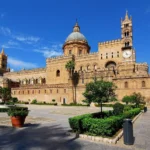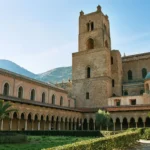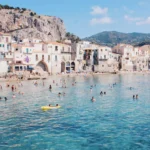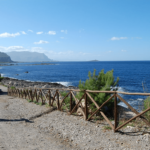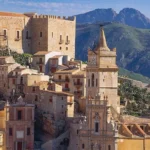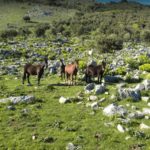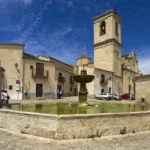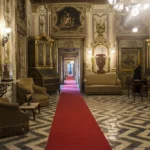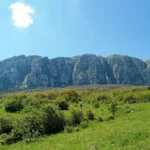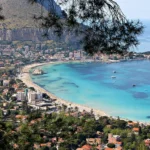Last Updated on 23 February 2025
Borgo Parrini enchants the eyes with its houses painted in shades of sea and sun. A town near Palermo undergoing a renaissance, known for its architecture reminiscent of the genius of Gaudi.
A Mosaic of Colors and Art
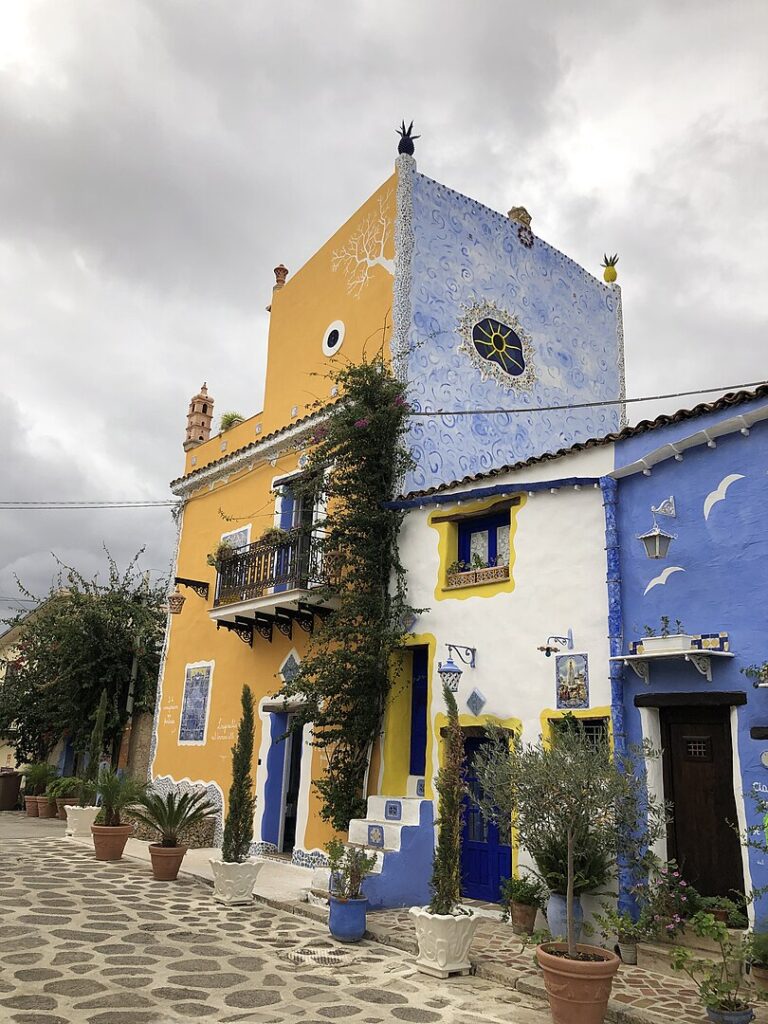
The houses stand out with their bright colors between white, yellow and blue. But the real beauty of Borgo Parrini is found in the details: mosaics, majolica, murals and author quotes on the walls. The artworks scattered throughout the streets turn a walk into a unique experience.
A History That Goes Back to the Seventeenth Century
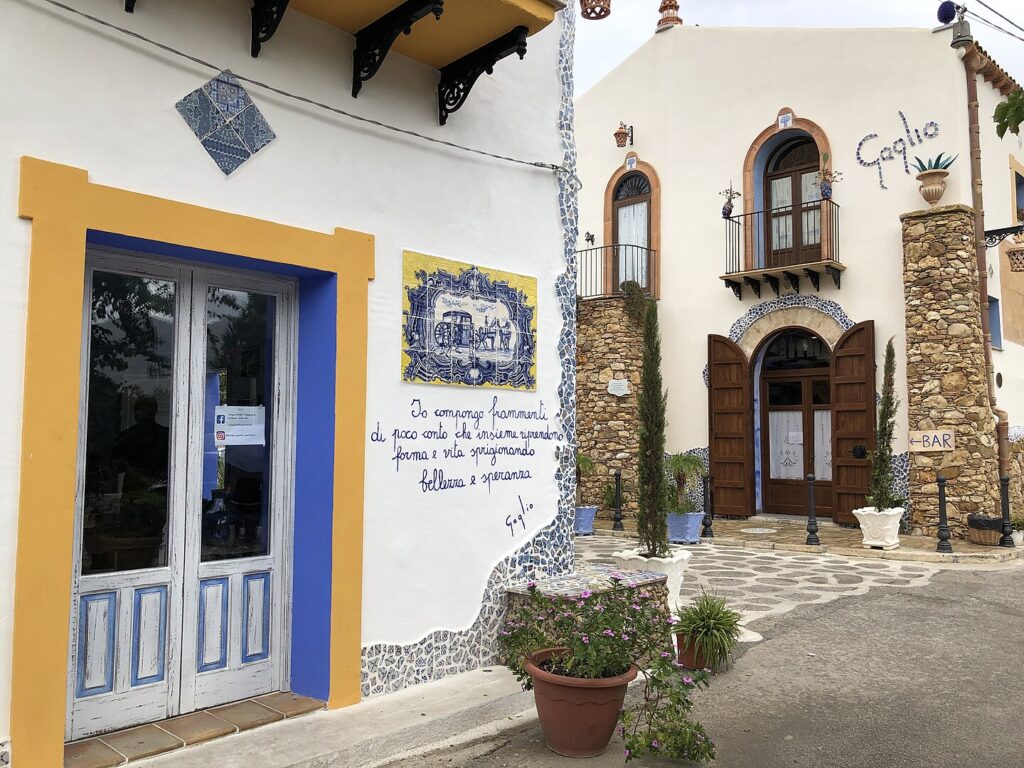
Borgo Parrini has ancient origins, dating back to the 16th and 17th centuries. It was founded by Jesuits (i.e., priests, called parrini in Sicilian), and then came under the ownership of French Prince Henri d’Orléans, Duke of Aumale, who chose it as the site for the production of “Moscatello dello Zucco.” The village prospered thanks to the winery, and by the mid-19th century, it housed about three hundred workers employed in its activities.
Rebirth
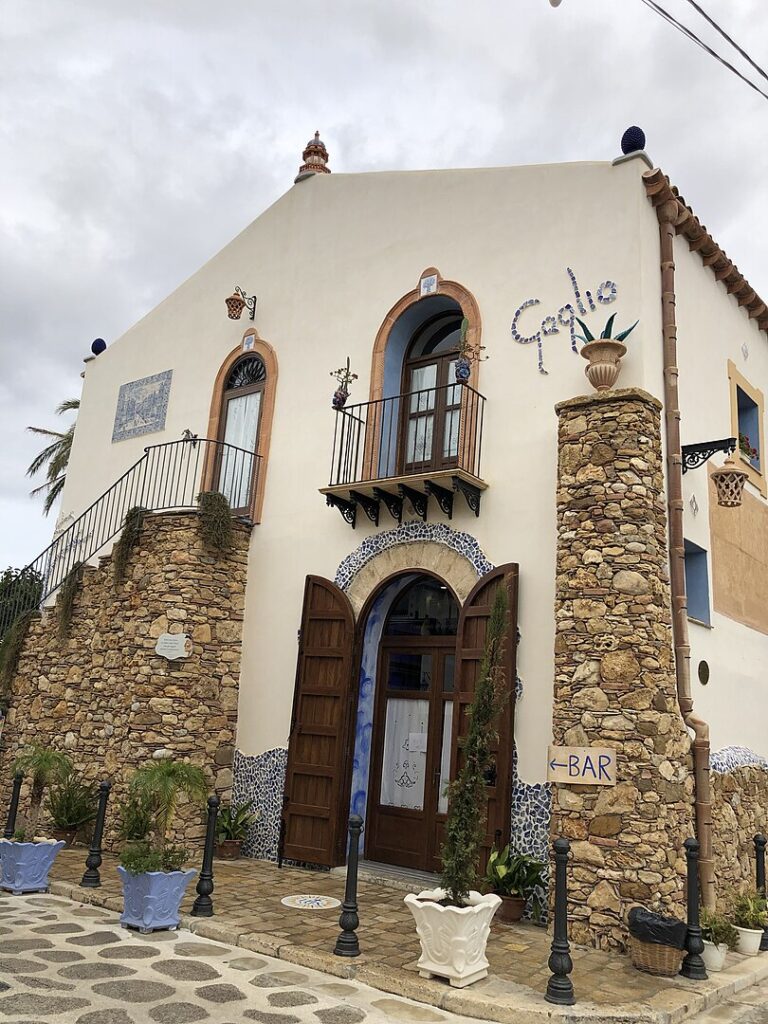
The village went through a phase of decline after World War II, when the population moved to the cities. The crisis persisted until the late 1990s, when Joseph Gaglio took the initiative to bring the village back to life. The old houses were restored and the village was filled with bright colors, majolica, ceramics and pottery.
The style adopted for the restoration is inspired by the visionary language of Gaudi, but also draws on Portuguese, Greek, Arab, and Sicilian traditions. The goal was clear: to bring back the typical Sicilian hospitality and to revive a precious piece of Italy that cannot be forgotten.
Borgo Parrini Today
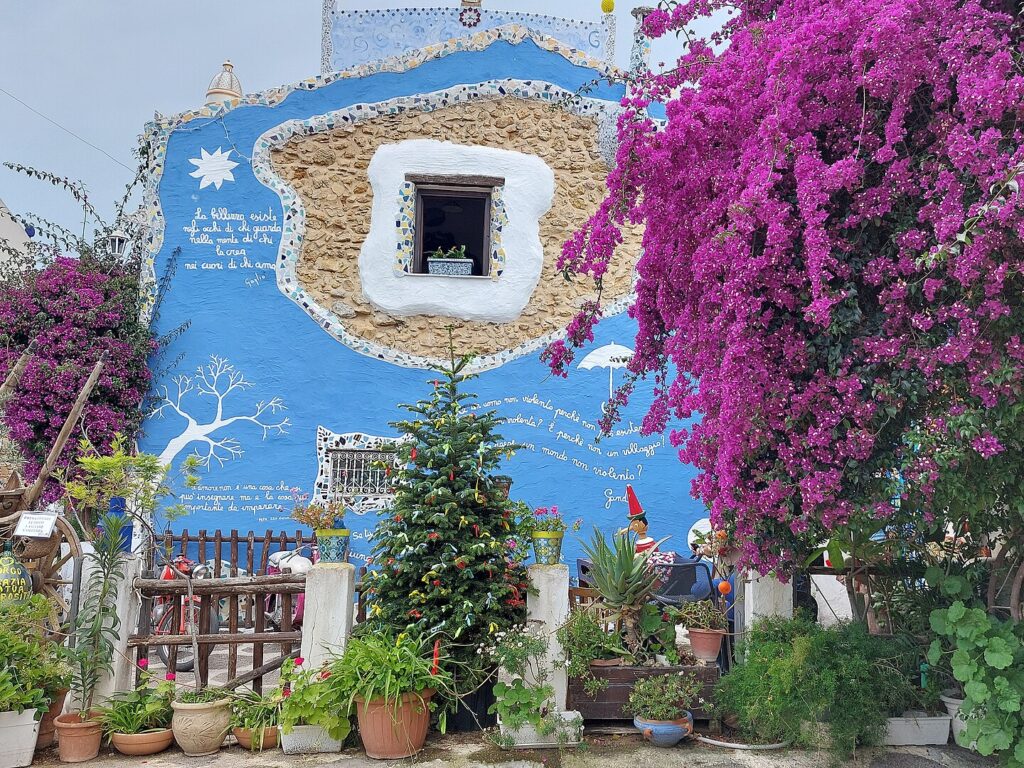
Today, Borgo Parrini is a unique place where culture, beauty and history come together in a kaleidoscope of colors and art. The heart of the village is the literary café, created by Giuseppe Gaglio in the former Jesuit convent, restored in the same style as the surrounding houses. Exhibitions, meetings and cultural events are held here, and the cultural association enlivens village life.
Around the literary café, you will find three pizzerias where you can enjoy local specialties and a historic bakery called “Za Santa,” which preserves traditional flavors. In addition, you can contact the cultural association for village stays, activities and excursions in the area.
Borgo Parrini is a discovery worth making, a journey through time and art, and a testament to the determination of those who have worked to bring this hidden gem of Sicily back to life.

